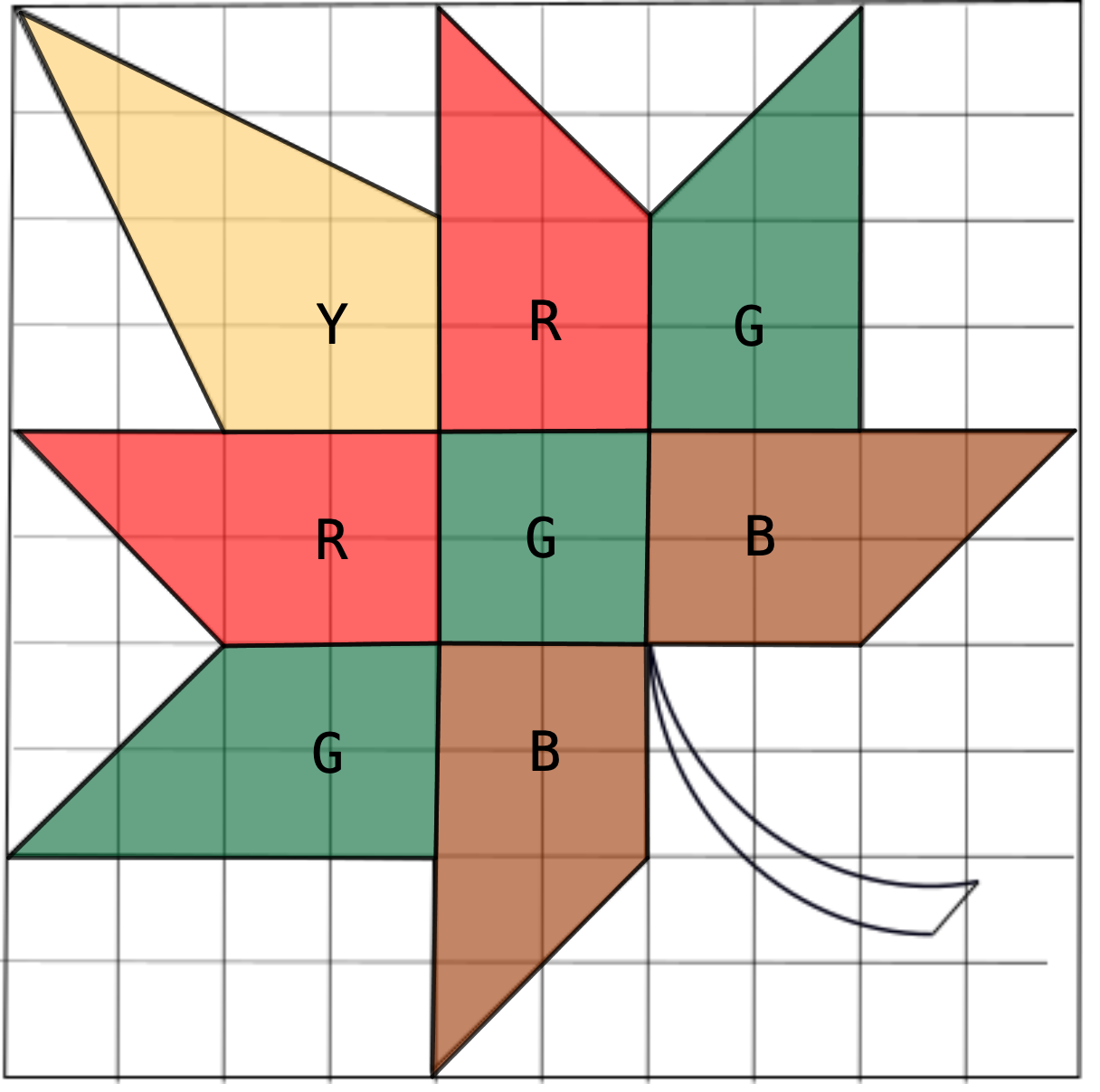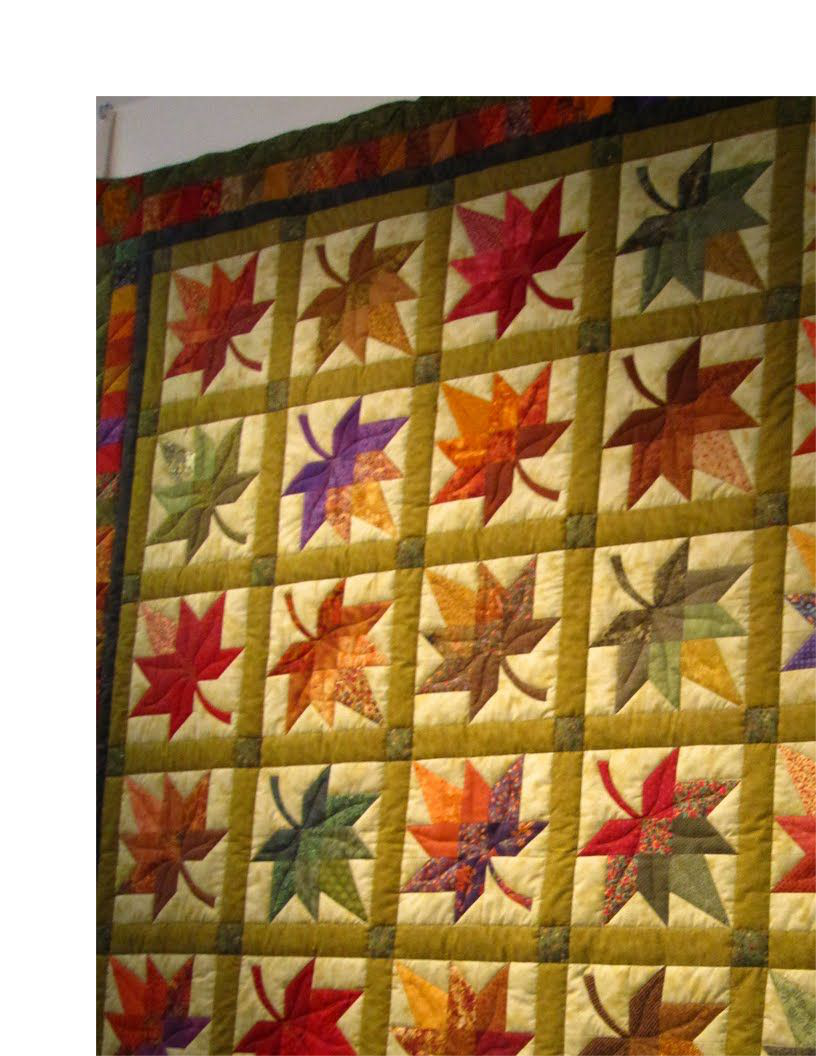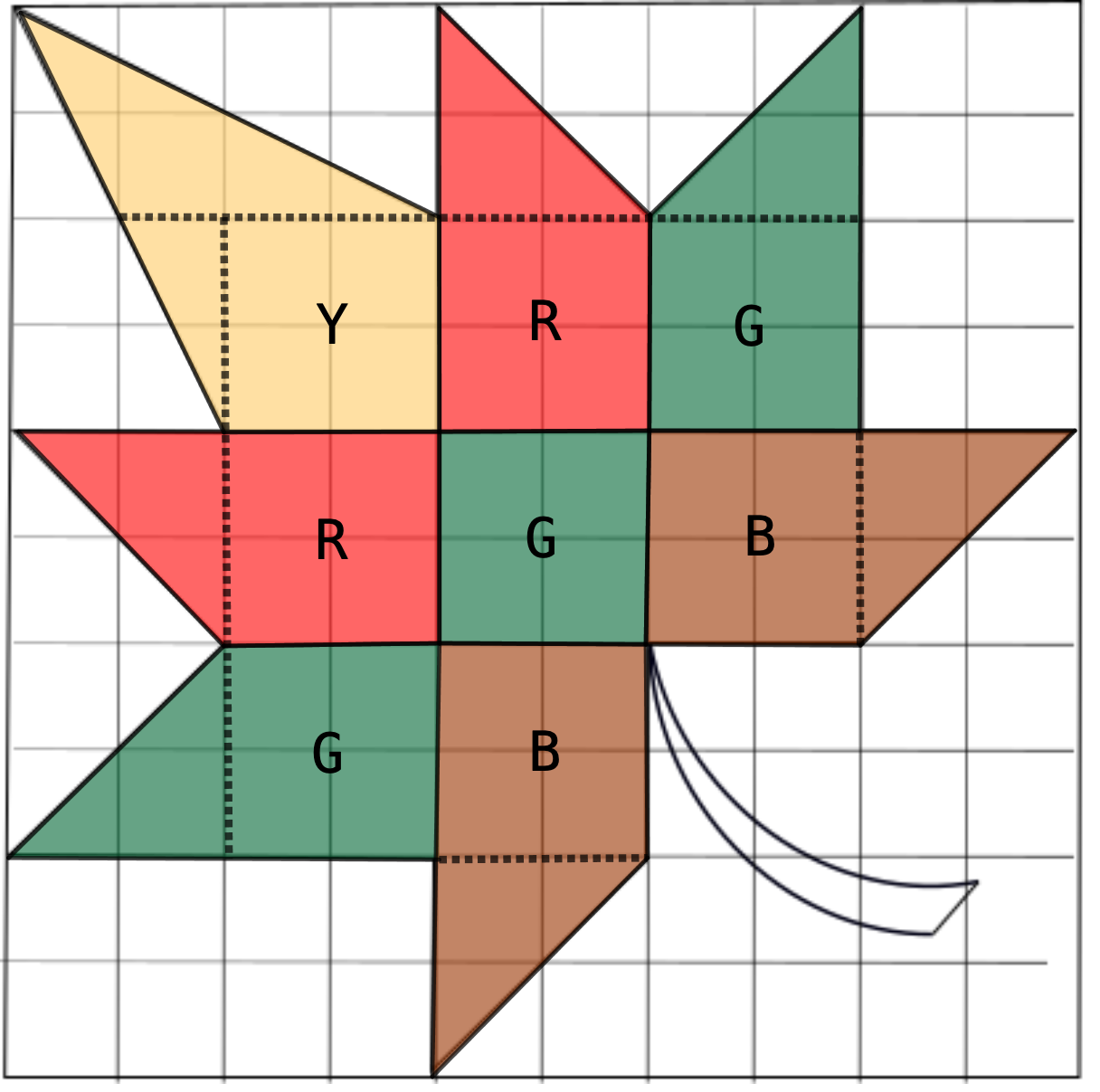


The \(10\,\)cm by \(10\,\)cm square on the left is the pattern for a single square in the maple leaf quilt on the right. In the pattern, the interior of the maple leaf has been divided into eight shapes, which have each been coloured yellow (Y), red (R), green (G), or brown (B). The rest of the square, including the stem, is white.


Draw dotted lines on the pattern which divide the interior of each coloured shape into pieces that are squares or triangles.
For each of the four colours in the pattern, what is the area of the maple leaf that is covered by that colour?
What is the area of the rest of the pattern, including the stem, that is white? That is, what is the area of the square that is not covered by the leaf?
One way to divide the interior of each coloured shape into pieces that are squares or triangles has been shown below.

The two red regions each consist of a square with area \(2 \times 2 = 4 \,\text{cm}^2\) and a triangle with area \(2 \times 2 \div 2 = 2\, \text{cm}^2\). Therefore, the area of one red region is \(4+ 2= 6\,\text{cm}^2\), and the total area of the two red regions is \(2 \times 6 = 12 \,\text{cm}^2\).
The two brown regions also each consist of a square with area \(2 \times 2 = 4 \,\text{cm}^2\) and a triangle with area \(2 \times 2 \div 2 = 2\, \text{cm}^2\). Therefore, the area of one brown region is \(4+ 2= 6\,\text{cm}^2\), and the total area of the two brown regions is \(2\times 6 = 12\,\text{cm}^2\).
The three green regions consist of two shapes that have the same dimensions as the red shapes, and the centre square. Since the area of the centre square is \(2\times 2 = 4\,\text{cm}^2\), the area of the three green regions is \(12+4=16\,\text{cm}^2\).
The yellow region has an area equal to the area of the \(4\,\)cm by \(4\,\)cm square in the upper left corner minus the areas of the two white triangles in that square. Each of these triangles has a base of \(2\,\)cm and a height of \(4\,\)cm, and so has an area of \(2\times 4 \div 2=4\,\text{cm}^2\). Therefore, the total area of the white triangles is \(4 + 4 = 8\,\text{cm}^2\). Thus, the area of the yellow region is \(4\times 4 - 8 =16-8=8\,\text{cm}^2\).
The total area of the maple leaf, excluding the stem, is the sum of the areas of the red, brown, green, and yellow coloured regions, or \(12+12+16+8=48\,\text{cm}^2\).
Thus, the area of square that is not covered by the leaf is equal to the total area of the square minus the total coloured area or \(10\times 10 - 48 = 52\,\text{cm}^2\).